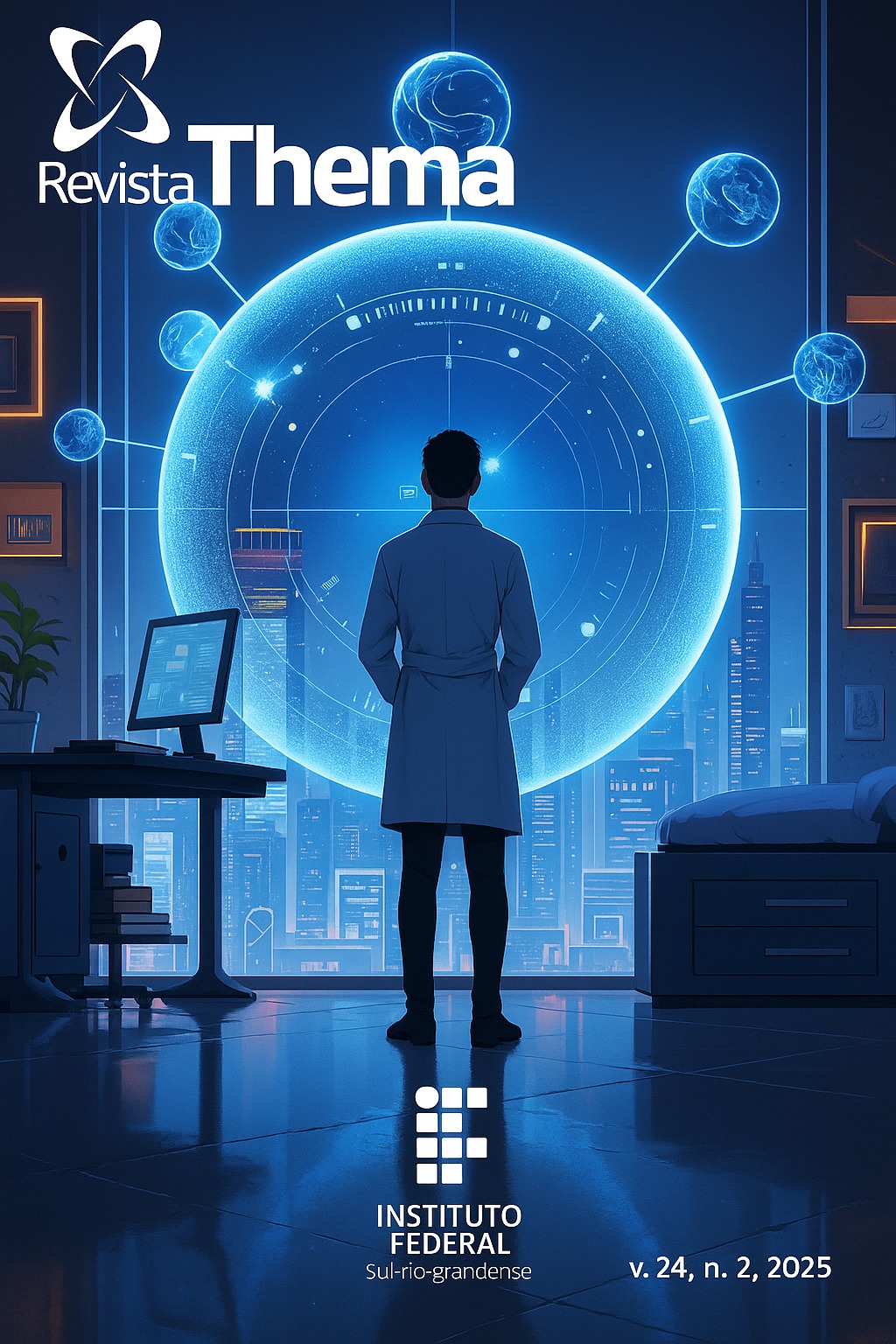DESENVOLVIMENTO DE MODELOS PARA AVALIAR O RISCO RELATIVO INSTANTÂNEO EM PACIENTES DE COVID-19 EM ESTÁGIOS INICIAIS E TARDIOS PARA USO COMO UM SISTEMA DE ESCORE
DOI:
https://doi.org/10.15536/revistathema.24.2025.4002Keywords:
COVID-19, Score, Cox Proportional Hazards, Machine LearningAbstract
COVID-19, recognized as an outbreak in January 2020 and declared a pandemic shortly after, remains a clinical concern. This study developed a predictive model to classify patients by Relative Risk, which can be employed as a scoring system. It is a retrospective cohort study using data from patients admitted to the National Institute for Infectious Diseases "Lazzaro Spallanzani" (Italy) between January 29 and March 28, 2020. Cox Proportional Hazards models were created for patient admission (n = 218) and for the late stage of the disease (n = 385). The models were validated through Machine Learning and tested for violations of Cox assumptions and statistical power. Coefficients were extracted, and equations were derived to calculate the Relative Risk. For Early Stage Relative Risk (ERR), the following variables were used: Age Hazard Ratio (HR): 1.05 [95% CI: 1.02 - 1.08], RDW-SD (HR): 1.08 [95% CI, 1.02 - 1.14], Lymphopenia (HR): 3.23 [95% CI, 1.32 - 7.95], and Obesity (HR): 2.88 [95% CI, 1.08 - 7.69]. For Late Stage Relative Risk (LRR), the variables were: LDH (HR): 7.41 [95% CI, 3.00 - 18.28] and RDW-CV (HR): 5.74 [95% CI, 2.28 - 14.45]. This study provides models and equations that can be implemented as a scoring system to assist in decision-making by calculating the instantaneous Relative Risk (RR).
Downloads
Downloads
Published
How to Cite
Issue
Section
License
O autor responsável pela submissão representa todos os autores do trabalho e, ao enviar o artigo para a revista, está garantindo que tem a permissão de todos para fazê-lo. Da mesma forma, assegura que o artigo não viola direitos autorais e que não há plágio no trabalho. A revista não se responsabiliza pelas opiniões emitidas.
A Revista Thema é de acesso aberto (Open Access), sem que haja a necessidade de pagamentos de taxas, seja para submissão ou processamento dos artigos. A revista adota a definição da Budapest Open Access Initiative (BOAI), ou seja, os usuários possuem o direito de ler, baixar, copiar, distribuir, imprimir, buscar e fazer links diretos para os textos completos dos artigos nela publicados.
Todos os artigos são publicados com a licença Creative Commons Atribuição-NãoComercial 4.0 Internacional. Os autores mantém os direitos autorais sobre suas produções, devendo ser contatados diretamente se houver interesse em uso comercial dos trabalhos.





